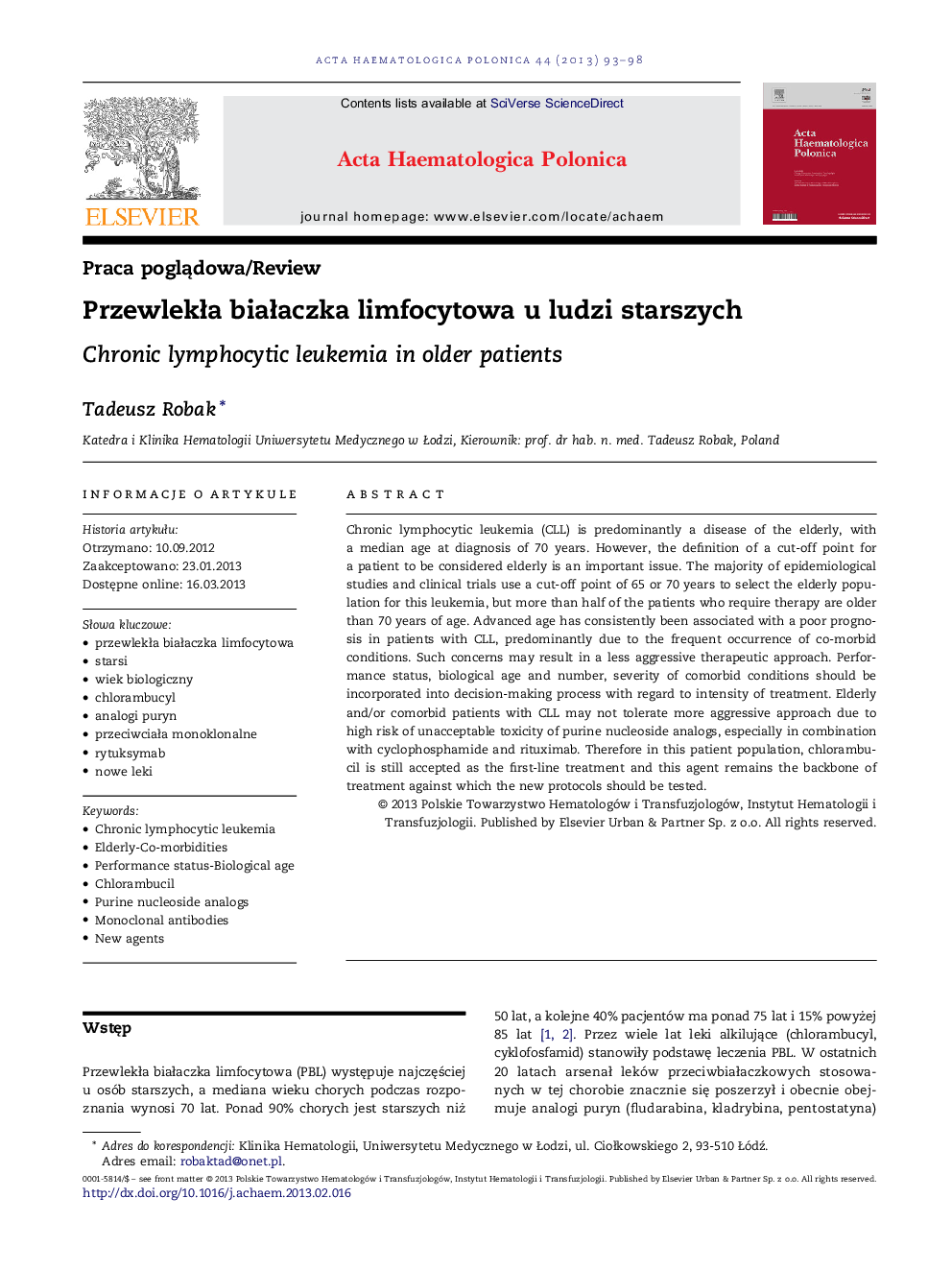| Article ID | Journal | Published Year | Pages | File Type |
|---|---|---|---|---|
| 3328142 | Acta Haematologica Polonica | 2013 | 6 Pages |
Abstract
Chronic lymphocytic leukemia (CLL) is predominantly a disease of the elderly, with a median age at diagnosis of 70 years. However, the definition of a cut-off point for a patient to be considered elderly is an important issue. The majority of epidemiological studies and clinical trials use a cut-off point of 65 or 70 years to select the elderly population for this leukemia, but more than half of the patients who require therapy are older than 70 years of age. Advanced age has consistently been associated with a poor prognosis in patients with CLL, predominantly due to the frequent occurrence of co-morbid conditions. Such concerns may result in a less aggressive therapeutic approach. Performance status, biological age and number, severity of comorbid conditions should be incorporated into decision-making process with regard to intensity of treatment. Elderly and/or comorbid patients with CLL may not tolerate more aggressive approach due to high risk of unacceptable toxicity of purine nucleoside analogs, especially in combination with cyclophosphamide and rituximab. Therefore in this patient population, chlorambucil is still accepted as the first-line treatment and this agent remains the backbone of treatment against which the new protocols should be tested.
Keywords
Related Topics
Life Sciences
Immunology and Microbiology
Immunology
Authors
Tadeusz Robak,
